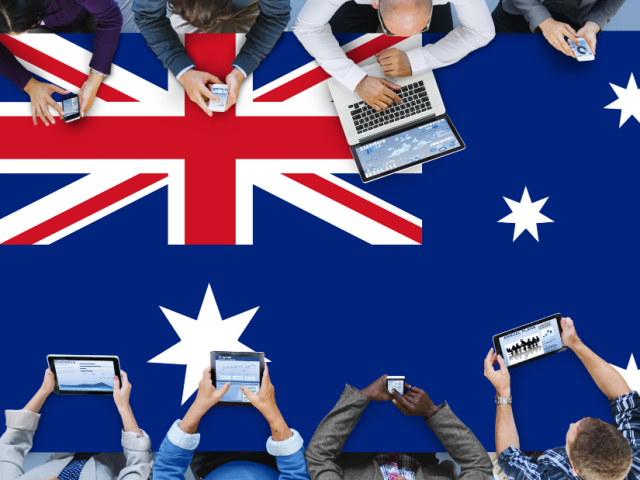Australia ranks 7th for wellbeing on the OECD Better Life Index, based on living conditions and quality of life. The OECD is the Organisation for Economic Co-operation and Development, and it’s an international organization that works to build better policies for better lives. Australia performs well in many dimensions of well-being relative to other countries in the Better Life Index. Australia outperforms the average in income, jobs, education, health, environmental quality, social connections, civic engagement and life satisfaction.
Here are some of the reasons that make Australia such a great place to live.
Low Crime Rate
According to the Global Peace Index, Australia is ranked as the 13th most peaceful country in the world, while South Africa is ranked 146th. In terms of specific crimes, the homicide rate in Australia is around 1 per 100,000 people, while in South Africa, it is around 30 per 100,000 people. Similarly, the rate of robberies in South Africa is much higher than in Australia. However, it is important to note that crime rates can vary significantly depending on the location and context.
But it is still important to look after yourself and be aware of the risks that exist - and ways to minimise them. This is particularly important for when you first arrive and are adjusting to your new way of life.
Following your common sense and best practices will ensure you remain safe and healthy, whether you are handling emergencies, personal and home safety, or natural elements such as sun, water, and fire.
Work-Life Balance

Another area where Australians and South Africans differ is in their approach to work-life balance. Australians are known for valuing their leisure time and prioritizing a healthy work-life balance. This can be seen in their generous vacation time, flexible work arrangements, and focus on outdoor activities and socializing.
Employees in Australia look forward each year to four weeks of vacation—which is mandated by federal law. After 10 years of service with one employer, one earns an additional 8.67 weeks of paid leave—for a whopping total of three calendar months of paid leave. Further, Australian employees are entitled to up to 18 weeks of paid parental leave, with an option to choose additional unpaid parental leave for up to a year. A universal public health insurance system also guarantees health insurance for all residents of the country. Employees typically work 38-hour weeks, Monday through Friday.
The best work-life balance in Australia is to be found outside of the major population centres.
A clear majority of professionals in the Australian Capital Territory (68%), Tasmania (62%) and regional areas were the happiest with their mix of working and personal lives, according to the SEEK Learning research. Although Victoria was the exception. Melbourne professionals (63%) were more satisfied with their work-life balance than those in regional Victoria (57%).
Low Unemployment Rate

Australia’s unemployment rate is a staggeringly low 3.5%, this compared to South Africa’s unemployment rate of 32.9%.
Need we say more.
Access to World Class Health Care Facilities

Australia has excellent public healthcare. The World Health Organization ranks Australia’s healthcare system as the 32nd most efficient in the world. Australian healthcare includes quality hospitals and clinics, and state-of-the-art diagnostic and testing facilities. It’s a key reason why Australian’s enjoy one of the longest life expectancies in the world.
There are many providers of health care in Australia, including:
- primary care services delivered by general practitioners (GPs)
- medical specialists
- allied health workers
- nurses.
Medicare and the public hospital system provide free or low-cost access for all Australians to most of these health care services. Private health insurance gives you choice outside the public system. For private health care both in and out of hospital, you contribute towards the cost of your health care.
World Class Education System

`The Australian education system is one of the most dynamic and innovative systems in the world. The system is three-tiered with Primary, Secondary, and Tertiary levels of education like any other country around the world.
Education in Australia encompasses the sectors of early childhood education (preschool) and primary education (primary schools), followed by secondary education (high schools), and finally tertiary education, which includes higher education (universities and other higher education providers) and vocational education (registered training organisations). Regulation and funding of education is primarily the responsibility of the States and territories; however, the Australian Government also plays a funding role.
Government schools (also known as public schools) are free to attend for Australian citizens and permanent residents, while Catholic and independent schools usually charge attendance fees. All Australian schools are required to adhere to the same curriculum frameworks of their state or territory.
Seven Australian institutions rank among the world’s top 100 universities. These rankings are consistently improving. In 2004, just 14 Australian universities appeared in the top 500, while in 2022, 24 Australian universities made the grade. Australia’s top-performing rankings are: the University of Melbourne, the University of Queensland, the University of Sydney, the University of New South Wales, Monash University, the Australian National University, and the University of Western Australia.
The world’s 12th largest economy

Strong growth in 2021 solidified Australia’s position as the world’s 12th largest economy in 2021. Nominal GDP was around A$2.2 trillion (US$1.6 trillion) in 2021. Australia is home to just 0.3% of the world’s population, but accounts for 1.7% of the global economy.
Australia’s outlook remains strong. The IMF forecasts the Australian economy will grow by 1.6% in 2023. This means Australia will again outperform other advanced economies, which are expected to grow by an average of just 1.3%. This follows Australia’s solid 5.2% growth in 2021 and a 3.7% in 2022. As an exporting nation, Australia’s outlook partly reflects the prosperity of its major trading partners. India, China and the ASEAN-52 economies all expect to register solid economic growth in 2023.
The Australian dollar is the sixth most traded currency globally. Today, Australia is home to the world’s fifth largest pool of managed funds and 11th largest stock market. Australia’s US$2.2 trillion managed funds sector is underpinned by a mandated retirement savings scheme, called superannuation. This has created the world’s fifth largest pension pool.
High Income Country with Low Tax Rates

Australia is a large consumer market and Australian households have a high disposable income. According to the Economist Intelligence Unit (EIU), almost 6 million households generate an income above US$75,000 per year. This places Australia sixth in global rankings. The EIU forecasts continued growth, with 7.6 million high-income households by 2030
Australia has one of the lowest overall tax rates of any high-income country in the world. Australia’s tax revenue represents 29% of GDP, compared to 34% across OECD countries. Australian social security taxes represent less than 1% of GDP. The average among the 38-strong OECD countries is 9%. Taxes on goods and services represented 7% of Australia’s GDP, compared to 11% across OECD countries.
Highly Skilled Workforce

Australia has one of the world’s most highly educated workforces. Approximately 48% of employed people hold a tertiary qualification. This ratio has increased rapidly, from just 36% in 2010. In some sectors, more than 70% of employees have a tertiary education degree. These sectors include ‘education and training’, ‘professional scientific and technical services’, and ‘financial and insurance services’.
Australia’s scientific research is highly ranked internationally. Australian research publications achieve an impact that is at least 20% above the global average in 20 out of 22 fields of academic research across a wide variety of disciplines. Australia’s six strongest categories of published research are in computer science, space science, multidisciplinary research, physics, clinical medicine, and molecular biology and genetics. The 20 academic categories where Australia outscores the global average show a wide diversity of disciplines and topics.
Australia is a nation of early adopters. In global rankings, Australia scores highest for the skills needed to use, adopt and adapt frontier technologies. These skills make Australia one of the most innovative countries in the world. Australia was the incubator for Google Maps, Wi-Fi, the black box flight recorder and the cochlear implant. The Economist Intelligence Unit reports that Australia is now the most attractive place in the world for tech companies to invest. Government agencies are also early adopters. Oxford Insights ranks the Australian Government among the top eight in the world in terms of ability to benefit from artificial intelligence.
Australia has one of the biggest technology industries in the Southern Hemisphere. The sector’s economic contribution to GDP has increased 79% since 2016–17, reaching A$167 billion in 2020–21. This equates to around 8.5% of GDP. Rapid digital adoption during COVID-19 meant that Australia’s technology sector grew by 26% – or A$34 billion – in the year to June 2021. The Tech Council of Australia has set a target for technology to deliver A$250 billion per annum to Australia’s GDP by 2030. This would be the equivalent of 1.2 million jobs.
No worries, we’re happy!

Australia was the second happiest country in the Asia region in 2021, according to a World Happiness Index published in 2022. High incomes help. Other factors include a sense of personal freedom, a spirit of generosity, trust in institutions and income equality. Australia’s lifestyle – plus its positive and optimistic spirit – are major factors for global companies that want to re-locate employees and families into the Asia-Pacific region. In global terms, Australia holds a similar ranking to Canada, New Zealand and Switzerland, and is ahead of Singapore, Korea and Japan.
A Renewable Energy Powerhouse

Australia is a leader in renewable energy. The country has vast natural resources. It’s cloudless skies and vast, empty plains make a perfect environment for generating solar power. Also, Australia’s strong offshore wind resources are positioned conveniently close to energy demand centres. These two factors make Australia an increasingly attractive investment destination for solar and wind power. Australia is taking action on climate change by legislating an ambitious emissions reduction target of 43% by 2030 and to net zero by 2050. This provides investors with certainty on Australia’s transition to net zero.
Renewables deliver a fast-growing share of Australian energy production. They accounted for a record 29% of total electricity generation in 2021. The Australian Government aims to generate 82% of electricity from renewables by 2030. Given our natural resources, wind and solar are Australia’s main renewable generators, making us the world’s sixth largest producer of solar energy. Innovation in solar energy has attracted significant investment. For instance, Lightsource bp is developing two new solar projects that aim to deliver 2 GW of solar-generating capacity in Australia this decade. This is enough to power approximately 1.5 million homes.
Globally, Australia ranks sixth on the renewable energy attractiveness index, developed by EY. The index considers factors such as energy imperatives, policy stability, project delivery capabilities and the diversity of natural resource. Australia aims to become a major exporter of renewable energy by 2030. This strategic national goal creates significant potential for investment. Capacity is increasing in three principal sectors: solar, wind and green hydrogen.
In terms of population size, Australia was the largest producer of solar electricity in 2021. Australia generated 1,091 kilowatt-hours (kWh) of solar power per head. Australia is also a leader in absolute terms. In 2021, they generated 28 billion kWh of solar power, making us the world’s sixth largest producer. This means that they generate nearly twice as much solar power as France, Mexico, the UK, or the Netherlands. Major projects are attracting investment from around the world. The 26 GW Australian Renewable Energy Hub (AREH) in the Pilbara region of Western Australia is a hybrid wind and solar project designed to produce green hydrogen for export. The AREH site is expected to extend across 6,500 km2. This is roughly four times the size of London.



 Michelle Oztas:
Michelle Oztas:  Tracey Lawrence:
Tracey Lawrence: